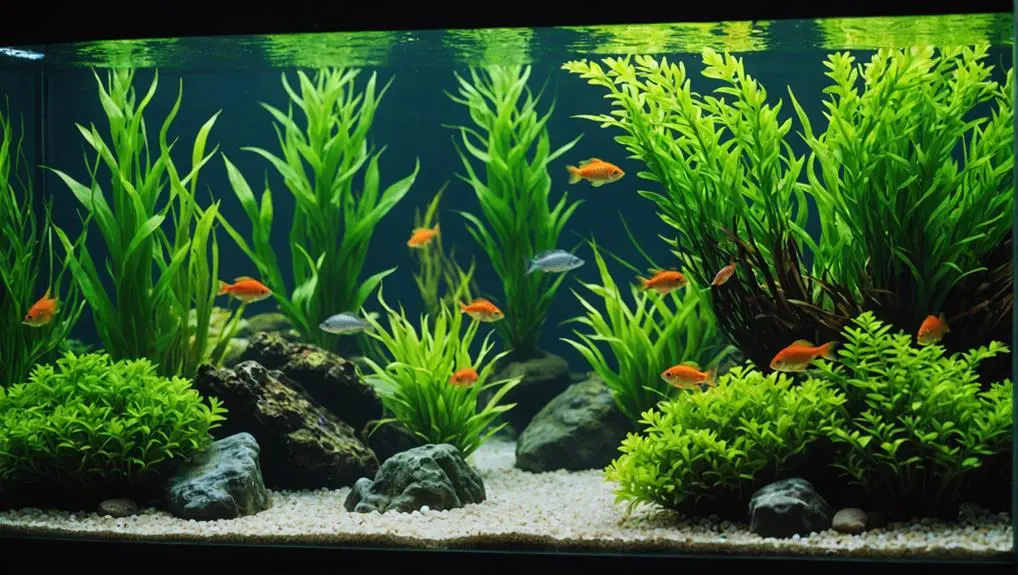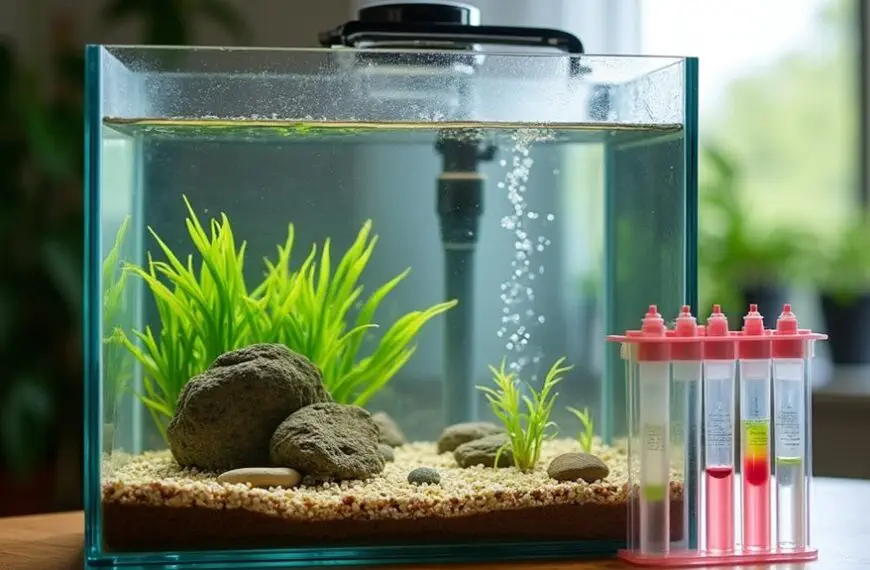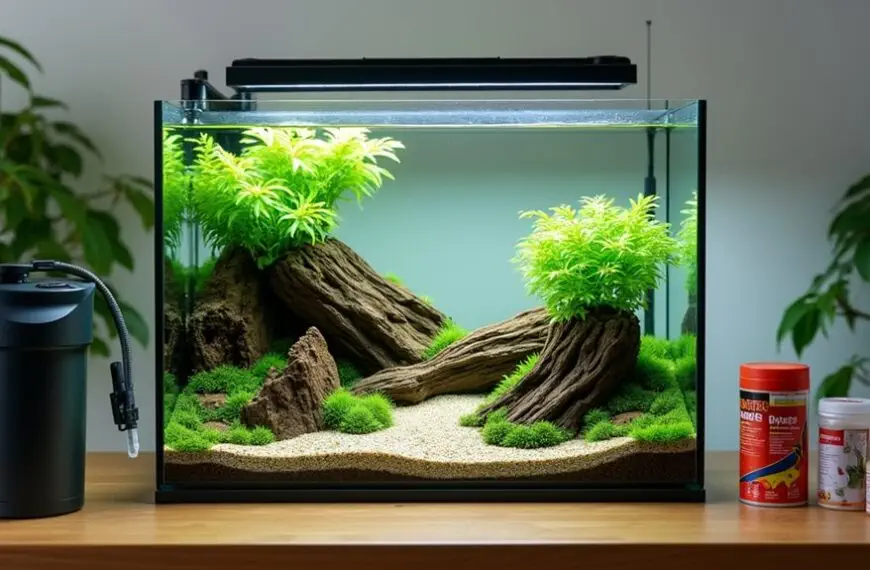Setting up your fish tank can be a blast, but watch out for these common pitfalls. First, choosing the wrong tank size can lead to chaos; stick with at least 20 gallons for happier fish. Next, resist the urge to add fish too quickly! Let your tank cycle for about 4-6 weeks, adding just 1-2 fish every couple of weeks to keep things stable. Finally, don't neglect water quality. Regular water changes and testing are key to keeping toxins at bay. Handle these mistakes, and your fish will thrive, leaving you with a lovely underwater world to enjoy! There's more to it, so keep going!
Contents
Choosing the Wrong Tank Size
Choosing the right tank size is crucial for creating a healthy environment for your fish. If you go for a tank under 20 gallons, you might find it tricky to keep a stable environment. Water parameters can swing wildly, especially for beginners.
Larger aquariums, ideally between 20 to 55 gallons, offer a better chance at consistent water quality and make management of water much easier. Plus, who doesn't want to avoid toxic spikes that can harm our finned friends?
Think about the adult size of your fish, too. Many species grow larger than you'd expect, and a cramped tank can lead to overcrowding, which raises fish stress and health risks. Nobody wants a grumpy fish, right?
Choosing a bigger tank not only helps with fish health but also creates a more visually appealing aquatic landscape. Imagine your fish swimming happily in a spacious home rather than feeling like they're stuck in a tiny apartment.
Adding Fish Too Quickly
Rushing to add fish into your new aquarium can lead to serious problems. It's tempting to fill that beautiful tank right away, but adding fish too quickly can create an unstable environment. You might face ammonia spikes that can harm or even kill your new friends.
To avoid this, let your tank cycle for at least 4-6 weeks to establish beneficial bacteria that break down waste.
When you finally introduce fish, remember to stock gradually. A good rule is to add just 1-2 fish at a time every couple of weeks. This way, you won't overwhelm your biological filtration system. Plus, it helps stabilize water parameters, making your fish feel more at home.
Don't forget to use a water conditioner to treat tap water before adding any aquatic life. This little step will help eliminate harmful toxins that could stress your fish.
Speaking of stress, taking your time reduces it, significantly boosting their chances of survival and health. So, while it may feel like a long wait, your patience will pay off in the long run. Your fish will thank you for a safe and welcoming environment!
Neglecting Water Quality Management

One of the most crucial aspects of maintaining a healthy fish tank is water quality management, and neglecting it can lead to dire consequences for your aquatic life. You wouldn't want to throw a party and forget to clean up, right?
Regular water changes are vital—aim for 10% weekly or 25% biweekly—to prevent harmful toxins like ammonia and nitrates from piling up. These substances can be a serious threat to fish health.
When setting up a new tank, give it time to stabilize. Local water might've toxins that need neutralizing, so don't skip those water conditioners!
Also, keep an eye on your pH levels; ignoring them can stress your fish and may even lead to health issues.
Make it a habit to test the water regularly. Inconsistent testing can leave you in the dark about rising nitrite levels, which can be especially tough on new fish.
High nitrate levels are a sure sign that your water quality management needs some work.
Frequently Asked Questions
What Are Common Mistakes in a New Tank Set Up?
When setting up a new tank, you might overlook tank cycling, filter selection, and tank size. Ensure proper water parameters, fish compatibility, and consider decoration ideas while planning a maintenance schedule for optimal health.
What Are the Don'ts of a Fish Tank?
When setting up your fish tank, don't rush the cycling process, ignore water quality, or neglect substrate choice. Ensure proper tank placement, lighting setup, equipment selection, and temperature control for your fish's well-being.
What Is the Number 1 Reason for Fish Death in an Aquarium?
Imagine your fish gasping for breath; poor water quality's the culprit. You've gotta focus on tank cycling, maintaining water parameters, and choosing filtration options to ensure their health and happiness. Regular maintenance prevents disease, fostering a thriving aquarium.
What Is the Best Way to Set up a Fish Tank?
To set up your fish tank, choose an appropriate aquarium size, select a quality filter, maintain ideal water temperature, pick the right substrate, add live plants, and establish a cycling process for fish compatibility and longevity.
Final Thoughts
Setting up your fish tank can feel like a thrilling adventure, but it's easy to stumble along the way. By avoiding the common pitfalls of choosing the wrong tank size, adding fish too quickly, and neglecting water quality, you'll create a vibrant underwater paradise for your finned friends. Remember, patience is key! So take a deep breath, channel your inner aquarist, and enjoy the journey. Your fish deserve a happy home, and you can make that happen!












